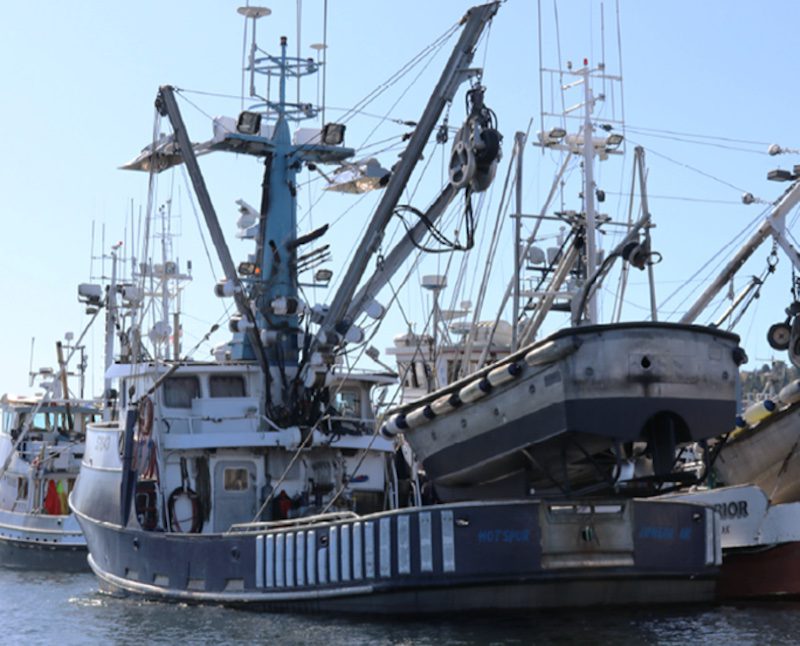Major Fire Breaks Out on Maersk Containership in Arabian Sea
A newbuild containership chartered by Maersk has suffered a major cargo fire in the Arabian Sea off the coast of India. The Indian Coast Guard (ICG) said Maritime Rescue Co-ordination...


Hotspur pictured earlier in Ketchikan, Alaska. U.S. Coast Guard Photo via NTSB
The National Transportation Safety Board (NTSB) has concluded that the likely cause of the capsizing and sinking of the fishing vessel Hotspur near Nunez Rocks, Alaska, was flooding into below-deck compartments.
On August 2, 2022, while transiting through the Dixon Entrance, the Hotspur began to list to port. Realizing the severity of the situation, the captain and four crewmembers quickly abandoned ship, escaping to a life raft. They were subsequently rescued by nearby vessels. Within 20 minutes of the crew first noticing the list, the Hotspur had capsized and sunk.
The NTSB report highlighted that the vessel’s bilge alarms, designed to alert the crew to water ingress, did not sound before the list became severe. The investigation indicated that the alarms in the affected compartments were likely non-operational. If the alarms had been working, the crew might have had the opportunity to rectify the situation before it became critical.
The report stressed the importance of automatic high-water bilge alarms, stating, “These alarms are designed to provide early warning of vessel flooding. In spaces that are inaccessible or hard to inspect while underway, these alarms are often the sole means of alerting operators to flooding. Regular testing of these alarms and adherence to best marine practices and manufacturer recommendations for inspection and maintenance is essential.”
The investigation also revealed that the Hotspur likely had limited stability before the incident due to the vessel’s load. As the Hotspur was less than 79 feet long, it was not subject to U.S. Coast Guard stability requirements for commercial fishing vessels. Without these stability calculations and instructions, the operator had minimal understanding of the vessel’s center of gravity. The weight of flood water, the free surface effect from partially filled fuel tanks and the flooding itself further reduced the vessel’s remaining stability, leading to the capsizing.
The Hotspur was declared a total loss, with an estimated value of $1.2 million.
The NTSB report can be found here.
Join the gCaptain Club for curated content, insider opinions, and vibrant community discussions.


Join the 107,327 members that receive our newsletter.
Have a news tip? Let us know.
Access exclusive insights, engage in vibrant discussions, and gain perspectives from our CEO.
Sign Up




Maritime and offshore news trusted by our 107,327 members delivered daily straight to your inbox.



Essential news coupled with the finest maritime content sourced from across the globe.
Sign Up